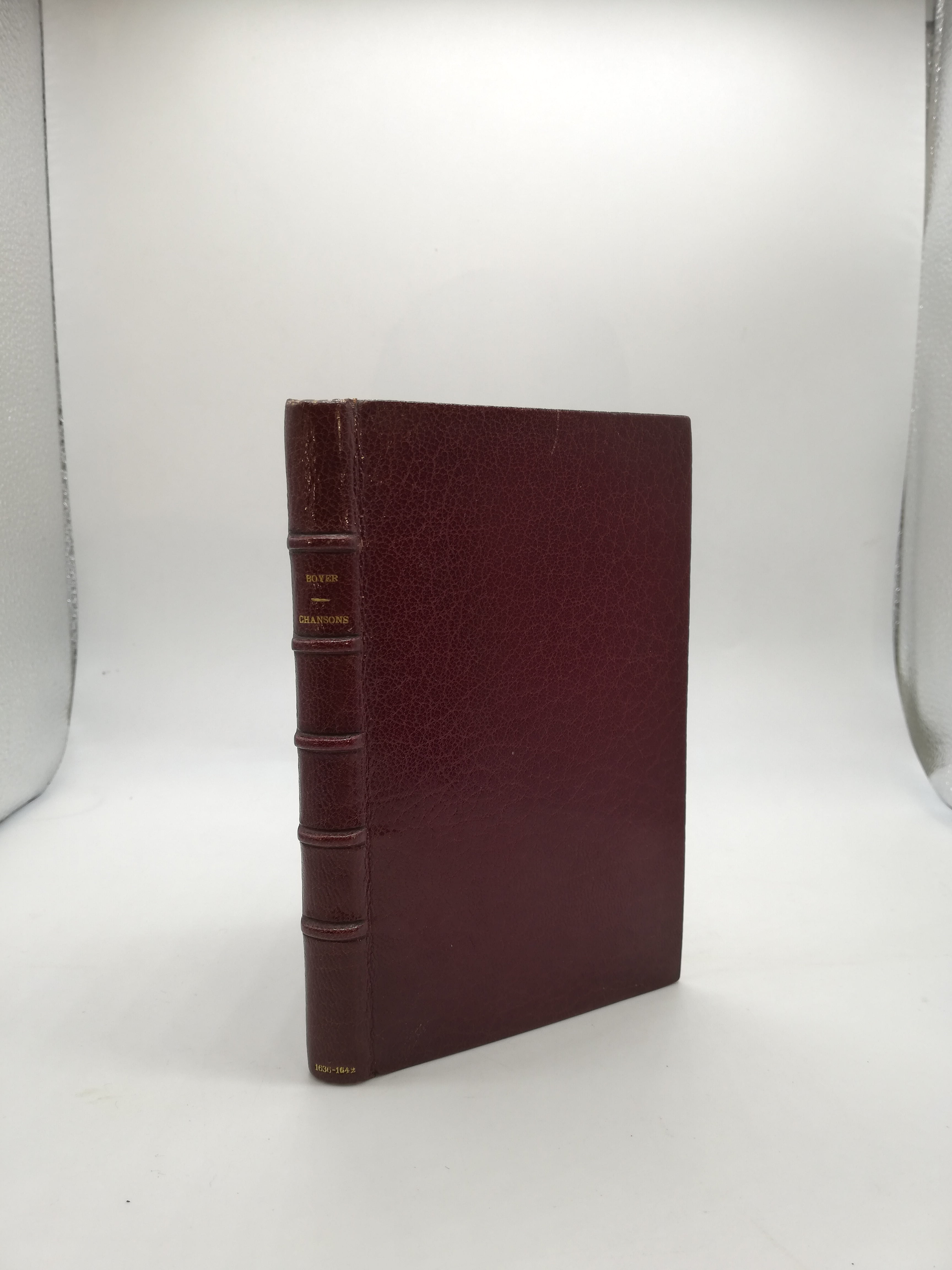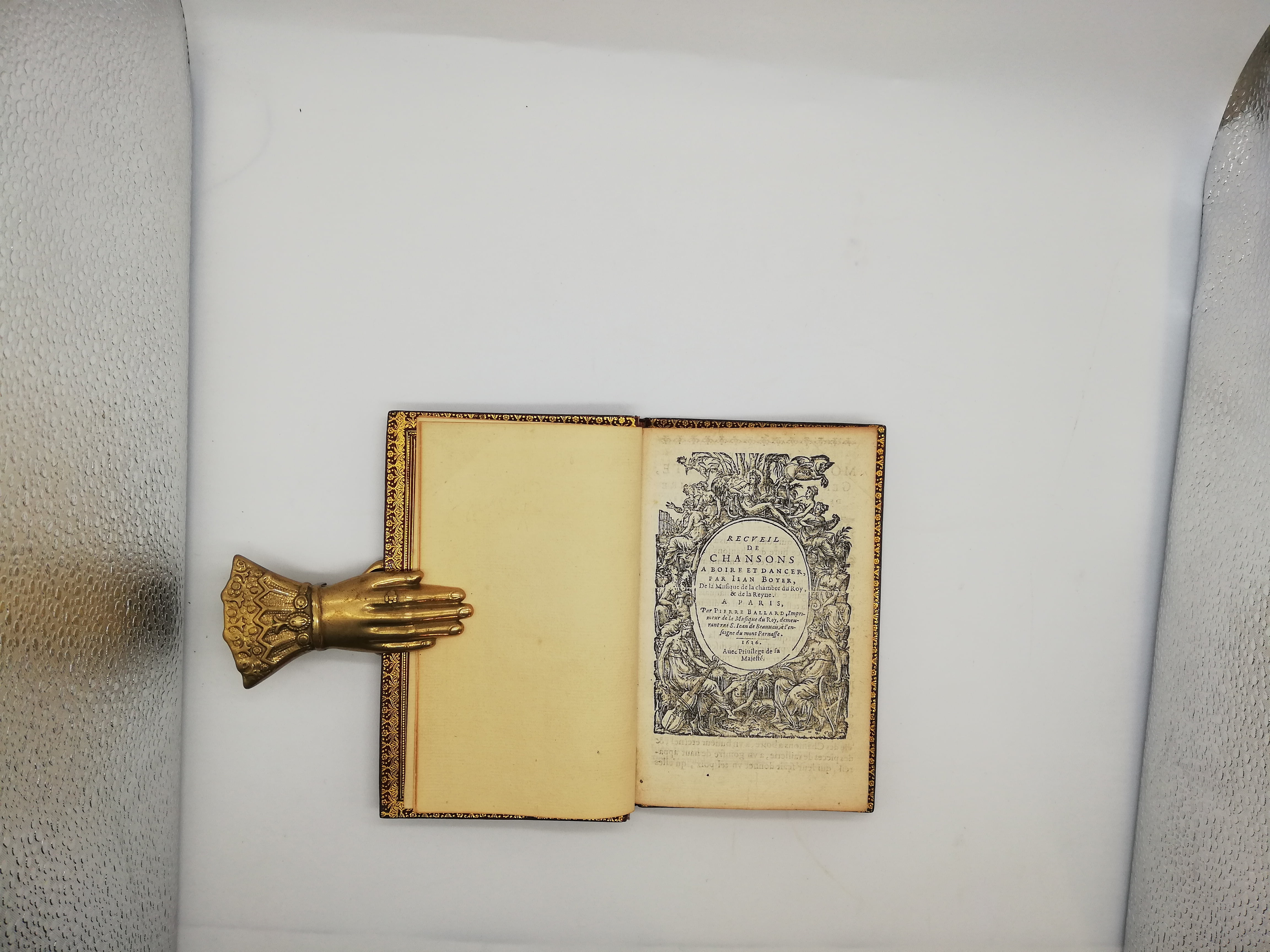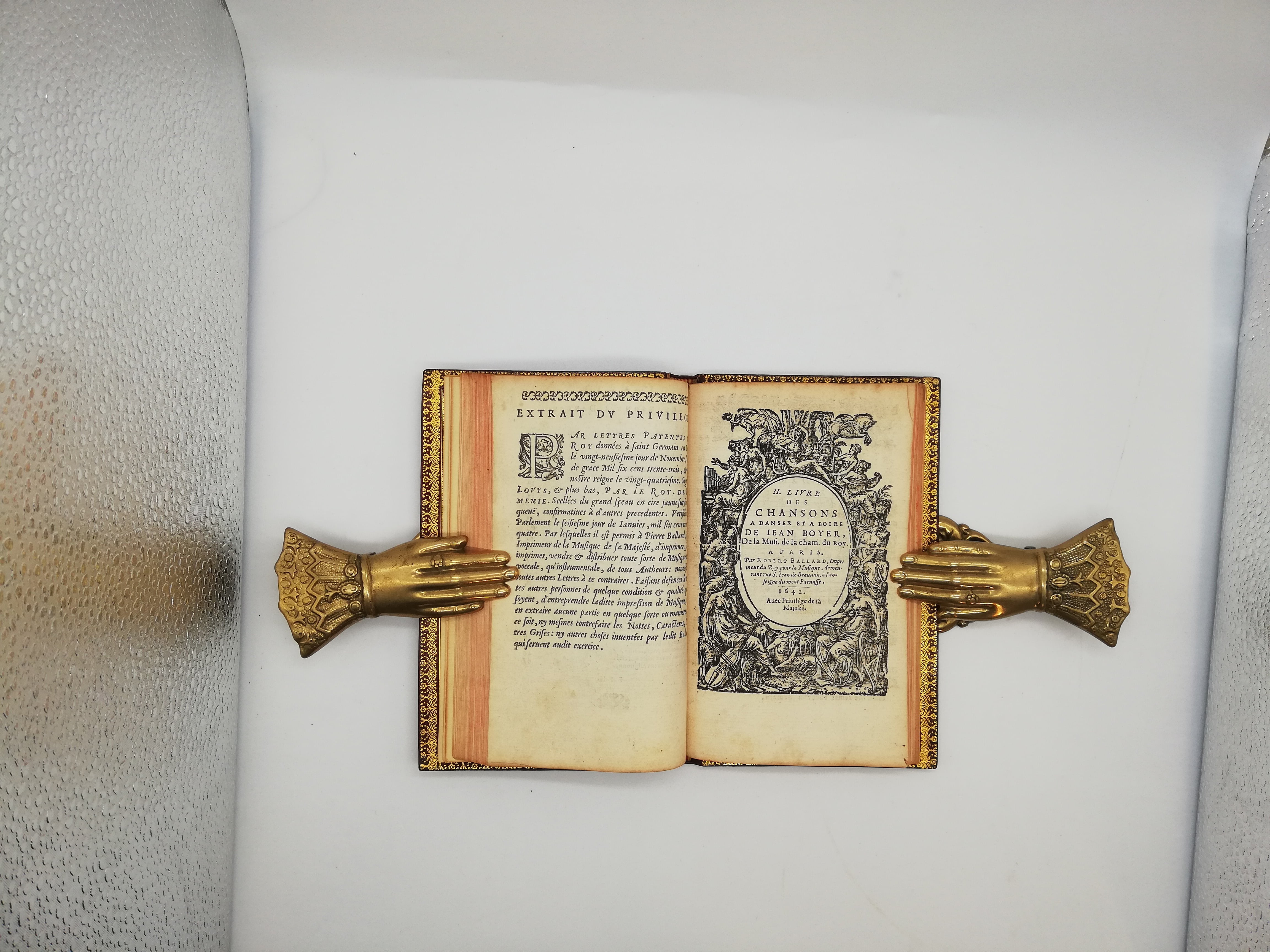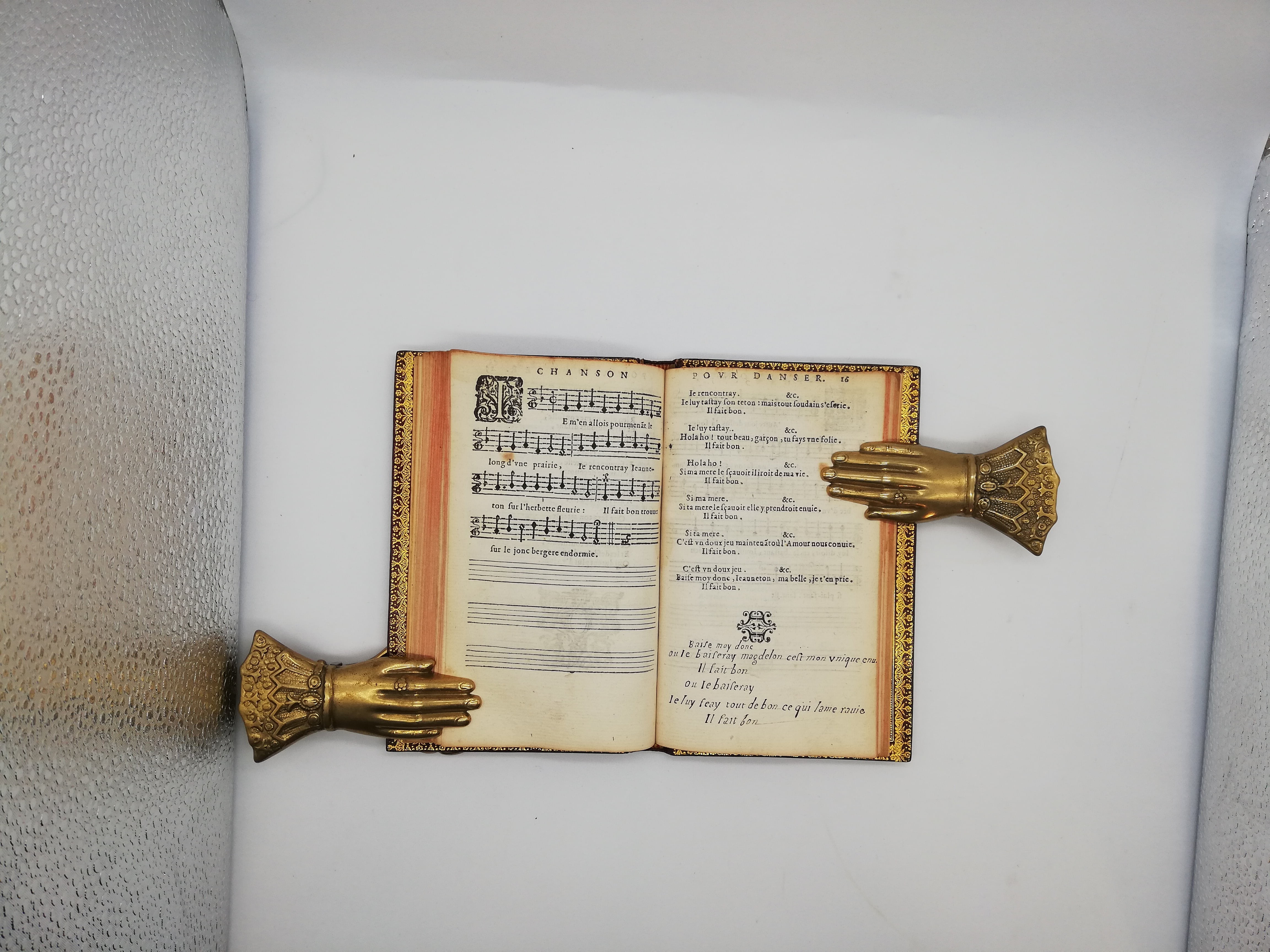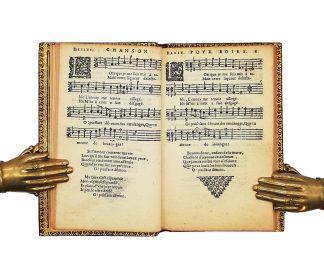BOYER, Jean.
Recueil de chansons à boire et danser [Chansons à 1 et 2 voix] [with] Deuxième livre des chansons à danser et à boire
Paris, Pierre Ballard, imprimeur de la Musique du Roi, 1936 and 1642£3,950.00
FIRST EDITIONS. Two vols. in one. 1) ff. [iv], 51 [i]: A4, B-G8, H4. 2) ff. 46 [i]. A-D8, E4, F8, lacking C8, and final blank F8 in second vol. Both titles within charming woodcut borders with musicians at sides, Apollo above, floriated woodcut initials, large grotesque woodcut head and tail-pieces, typographical ornaments, an extra verse added in mss. in contemporary hand on ff16 of second volume. Light age yellowing, water-stain to last seven leaves, tiny worm trail to edge of lower blank margin of first few leaves of second. Overall, very good copies, crisp and clean in fine French nineteenth century prune morocco ‘Janseniste’, spine with raised bands, date author and title gilt lettered, edges double gilt ruled, inner dentelles richly gilt, marbled endpapers.
Exceptionally rare copies of the first and only editions of these “songs for drinking and dancing” by Jean Boyer. These two collections of drinking and dancing songs belong to an authentically French genre, a light-hearted derivative of the ‘Air de cour’ a secular court song, which became one of the most important vocal genres in the first third of the 17th century. Among the remaining collections of drinking and dancing songs of the period, Boyer’s are probably the most interesting both rhythmically and harmonically, and the texts he chooses to set to music are generally more refined than those of many of his contemporaries. They do, however, remain secular, often bawdy and amusing, lighthearted songs, clearly meant for a popular audience even though they were printed by the King’s printer of music.
“Set either in polyphony for four or five unaccompanied voices—mostly during the late sixteenth century, but also still in Boyer’s ‘1er livre d’Airs à quatre parties’ [1619]—or for one single voice with lute accompaniment, such songs were usually performed and heard at court for the private entertainment of the king (Louis XIII) and his entourage. Composers were among the most eminent musicians of the court, including Pierre Guédron, Antoine and Jean-Baptiste Boësset, François Richard, Étienne Moulinié, Jean Boyer, etc., who were all excellent singers, if not also lutenists. Given the courtly destination of these airs, printing privileges were given primarily to the royal publishers Le Roy & Ballard, though Ballard continued to publish airs by himself later on. The success of these songs was such that they became the main genre to be inserted in court ballets and, from 1608 some printed collections of ‘airs de cour’, conversely, mainly consisted of songs directly taken from the most sensational recent ballets de cour. Whether written by anonymous verse-writers, or by some of the most eminent French poets (e.g., Ronsard, Sillac, Pasquier, Desportes, and du Baïf) or derived from Italian pastorals by Tasso or Guarini and translated by d’Urfé, the texts were usually quite simple, in a binary form, and in regular meter. Always strophic, the poems were symmetrical, they typically had rhyming lines of 6–13 syllables organized in strophes of 4–8 lines and were set in a syllabic manner. … Although airs de cour were popular even beyond Paris and France, the fascination with the genre began to decline in the 1630s, and it was the chanson pour boire (humorous songs about drinking) and the chanson pour danser (dancing songs) that succeeded the more courtly genre until the early 1670s. …. Boyer’s 1636 ‘Recueil d’Airs à boire et danser’ consists of 51 songs, 26 “à boire” for a treble and bass voice, and 25 “à danser” for a solo singer, whereas the second collection (IIeme Livre des Chansons à danser et à boire), was published in 1642 and contains 31 chansons “pour danser”, four courantes and two sarabandes (all for a solo voice), and only seven chansons “pour boire” set for two voices (treble and bass)” Marc Vanscheeuwijck. ‘Chansons à boire et à danser. Airs de cour.’
Excellent copies of these rare works, finely bound.
In stock



